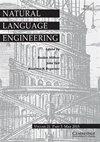使用预训练序列到序列模型的土耳其语抽象文本摘要
IF 1.9
3区 计算机科学
Q3 COMPUTER SCIENCE, ARTIFICIAL INTELLIGENCE
引用次数: 1
摘要
随着网络上可用文档数量的大量增加,查找相关信息已成为一项具有挑战性、乏味且耗时的活动。因此,文本自动摘要已成为一个重要的研究领域,受到了研究者的广泛关注。近年来,随着深度学习的发展,基于序列到序列(sequence-to-sequence, Seq2Seq)模型的神经抽象文本摘要越来越受欢迎。这些模型有很多改进,比如使用预训练的语言模型(如GPT、BERT和XLM)和预训练的Seq2Seq模型(如BART和T5)。这些改进解决了神经摘要的某些缺点,并改进了诸如显著性、流畅性和语义等挑战,从而能够生成更高质量的摘要。不幸的是,这些研究大多局限于英语语言。最近发布的单语言BERT模型和多语言预训练Seq2Seq模型提供了在低资源语言(如土耳其语)中使用这些最先进模型的机会。在本研究中,我们使用预训练的Seq2Seq模型,并在两个大型土耳其数据集TR-News和MLSum上获得了最先进的结果,用于文本摘要任务。然后,我们利用数据集中的标题信息,并在两个数据集中建立标题生成任务的硬基线。我们表明,模型的输入对于此类任务的成功具有相当大的重要性。此外,我们还提供了对模型的广泛分析,包括跨数据集评估、各种文本生成选项以及土耳其语ROUGE评估中预处理的影响。结果表明,单语言BERT模型在所有数据集上的所有任务上都优于多语言BERT模型。最后,对生成的摘要和模型的标题进行了定性评价。本文章由计算机程序翻译,如有差异,请以英文原文为准。
Turkish abstractive text summarization using pretrained sequence-to-sequence models
Abstract The tremendous amount of increase in the number of documents available on the Web has turned finding the relevant piece of information into a challenging, tedious, and time-consuming activity. Accordingly, automatic text summarization has become an important field of study by gaining significant attention from the researchers. Lately, with the advances in deep learning, neural abstractive text summarization with sequence-to-sequence (Seq2Seq) models has gained popularity. There have been many improvements in these models such as the use of pretrained language models (e.g., GPT, BERT, and XLM) and pretrained Seq2Seq models (e.g., BART and T5). These improvements have addressed certain shortcomings in neural summarization and have improved upon challenges such as saliency, fluency, and semantics which enable generating higher quality summaries. Unfortunately, these research attempts were mostly limited to the English language. Monolingual BERT models and multilingual pretrained Seq2Seq models have been released recently providing the opportunity to utilize such state-of-the-art models in low-resource languages such as Turkish. In this study, we make use of pretrained Seq2Seq models and obtain state-of-the-art results on the two large-scale Turkish datasets, TR-News and MLSum, for the text summarization task. Then, we utilize the title information in the datasets and establish hard baselines for the title generation task on both datasets. We show that the input to the models has a substantial amount of importance for the success of such tasks. Additionally, we provide extensive analysis of the models including cross-dataset evaluations, various text generation options, and the effect of preprocessing in ROUGE evaluations for Turkish. It is shown that the monolingual BERT models outperform the multilingual BERT models on all tasks across all the datasets. Lastly, qualitative evaluations of the generated summaries and titles of the models are provided.
求助全文
通过发布文献求助,成功后即可免费获取论文全文。
去求助
来源期刊

Natural Language Engineering
COMPUTER SCIENCE, ARTIFICIAL INTELLIGENCE-
CiteScore
5.90
自引率
12.00%
发文量
60
审稿时长
>12 weeks
期刊介绍:
Natural Language Engineering meets the needs of professionals and researchers working in all areas of computerised language processing, whether from the perspective of theoretical or descriptive linguistics, lexicology, computer science or engineering. Its aim is to bridge the gap between traditional computational linguistics research and the implementation of practical applications with potential real-world use. As well as publishing research articles on a broad range of topics - from text analysis, machine translation, information retrieval and speech analysis and generation to integrated systems and multi modal interfaces - it also publishes special issues on specific areas and technologies within these topics, an industry watch column and book reviews.
 求助内容:
求助内容: 应助结果提醒方式:
应助结果提醒方式:


